Assembled ATtiny412, new ATtiny, 5 I/O pins, DAC, Arduino support - or ATtiny402 w/out DAC
Designed by Azduino by Spence Konde in United States of AmericaThis seller is taking a break. Sign up below to get an email when they're back!
No shipping info available.
Set destination country to see options
Shipping to starts at
Free shipping is available to !
Ships from
This item does not ship to .
More Info
Sign up and we'll send a reminder when the seller returns!
**Note - pictures do not show Rev. B board with autoreset circuit. As we are no longer assembling boards with this autoreset circuit loaded. Communication with customers as well as sales trend have s…
Read More…**Note - pictures do not show Rev. B board with autoreset circuit. As we are no longer assembling boards with this autoreset circuit loaded. Communication with customers as well as sales trend have shown that most users do not make use of the feature. For the same reason (in addition to it's being strictly worse) we are also no longer assembling boards based on the 402.
We do still have inventory of parts, however, and if needed we can rapidly assemble more of 412 boards with autoreset, or even 402 boards, with voltage regulators for 5v, 3.3v, 2.5v, 1.8v, or (for applications where low power consumption is paramount) no/bypassed regulator, Send me a message and i'm happy to help out with that.
For a limited time, buy a "last chance" board, and get a free unpopulated Rev. B board!
Over the past several years, Atmel/Microchip has been releasing parts based on a new set of peripherals, the megaAVR 0-series and tinyAVR 0/1-series. These use the familiar AVR instruction set and open source avr-gcc compiler used with the classic AVR microcontrollers, but with redesigned and more capable on-chip peripherals and highly competitive prices. The best known of these (among hobbyists, at least) is the ATmega4809, used on the Arduino Uno WiFi Rev.2 and Nano Every However, there is also an extensive line of ATtiny parts based on this new architecture - and now with my megaTinyCore, there is full Arduino IDE support for these.
On Rev. A, the TX and RX lines from the FTDI connector are routed to the "alternate" pins (Arduino pins 2 and 3, physical pins 4 and 5), not the "default" pins (Arduino pins 0 and 1, physical pins 2 and 3). In megaTinyCore versions prior to 2.0.0, the 8-pin parts defaulted to using the "alternate" pins; in 2.0.0 and later, this is no longer the case - on 2.0.0 and later, you must call Serial.swap(1) before Serial.begin() to move Serial to the alternate pins. The Rev. B boards have TX and RX routed to the the default pins, with the onboard LED moved to PA3/Arduino Pin 4/physical pin 7.
The genesis of this problem is an inaccurate preliminary data sheet used for the original design, which indicated that there were no default serial pins. That particular datasheet has remarkable persistence - To this day I am asked questions based on it every so often. Don't use the preliminary datahseet. There has been a non-preliminary one for years, and I think has undergone at least one revision since.
The ATtiny 412 and 402 are the top-end 8-pin parts from the tinyAVR 0/1-series product lines (the top end isn't particularly high for the 8 pin parts I'm afraid). Nonetheless, the small package size and easily soldered pins have made these fairly popular (either that, or their users are particularly vocal). These breakout boards come equipped with your choice of 3.3v or 5v regulator (now LDL1117 - with dropout as low as 0.35v!), or no regulator at all (regulator bypassed). An LED (on PA7, Arduino pin 3), and a UPDI programming header (with the 470 ohm resistor on the board) are resent to assist debugging and programming, as is a 1x6-pin "FTDI" header with the standard 1x6 pin serial layout. Regardless of the regulator option, it can be powered using the two pins in the lower left corner (these are also protected with a PTC fuse), and go through the regulator if present. If there is no regulator, we install a 0 ohm resistor in it's place - that allows you to keep the extra backup safety of the PTC fuse when running from batteries, particularly unprotected lithium cells. Only a madman would intentionally power an electronics project from an unprotected lithium battery, but unless you take the battery apart and find the protection circuit (a dangerous proposition to put it mildly), you're relying on the word of a random online seller. Some are legit, some are shady, and some are too clueless to know what the hell they have.
All pins are broken out, and there are 3 Vcc and 3 Gnd pins available, plus the ones on the UPDI and Serial headers so even if you're not using breadboard, you can still easily connect power and ground for multiple external devices.
Board dimensions are 1.1" x 0.85"
The ATtiny402 like the reset of the 0-series is intended for low cost applications though the price difference is nothing to write home about. These were meant as an option for people developing boards that will be produced in large quantities where the cost savings is significant,but it became apparent that there was no point in producing them - the effectively cost the same price, but they're strictly worse. For hobbyists and one-off (or really anything short of something involving of devices projects, the is almost certainly a better deal. The main differences are:
In some of the pictures shown above, the boards are shown with pin header (not included) attached. We recommend:
There are two approaches to programming these parts:
Unlike other AVR microcontrollers, these new parts are programmed via a "UPDI" singlewire interface instead of the SPI-based ICSP protocol. Previously we recommended a JTAG2UPDI tool. With the 2021 and 2022 releases of SerialUPDI, the JTAG2UPDI solution has been thoroughly upstaged. Whereas JTAG2UPDI involved using a whole Arduino nano or clone thereof, a SerialUPDI programmer can be made from just the serial adapter. And it uploads faster that optiboot, NEDBG (Curiosity nano) via AVRdude, and JTAG2UPDI, in all cases by a larger than 2:1 margin. Make A super cheap UPDI programmer that uploads supr fast with any serial adaopter
The order of the pins on the UPDI header is UPDI-Gnd-Vcc - this means that if the programmer is connected backwards, the board will not be damaged. The 470k resistor is on the breakout board; you do not need to (and should not) use another one.
A typical development configurn might have the board connected to a serial port via the 6-pin serial header for serial debug, and to the UPDI programmer via the 3-pin header for uploading new code (as shown in the pictures)
As of megaTinyCore 1.1.2, the Optiboot bootloader is supported for all parts; this works with an external serial adapter (like the 6-pin ones used for the Arduino Pro Mini). Optiboot takes up 512b of flash for the bootloader. In addition to obliviating the need for a UPDI programmer to upload sketches, Optiboot allows you to use the same port for upload and serial monitor like a normal Arduino board. On the ATtiny412 and ATtiny402 parts, due to the limited memory, we do not recommend using Optiboot.
There are two general approaches to using Optiboot on these parts:
Without auto-reset, UPDI enabled. On all boards that do not support auto-reset, and on boards that do if this option is selected, the UPDI/Reset pin will be left as UPDI, and the board can be freely reprogrammed via UPDI. The version of the bootloader installed will be active for 8 seconds after power on, or after a WDT or software reset. So for example, to upload, you would verify sketch, unplug, plug back in, and then upload - or alternatively, you could adapt your sketch to trigger a software reset. UPDI programming will still be possible. Note that for these boards, you must use UPDI to "burn bootloader" with the non-optiboot board definition selected if you want to switch back to uploading sketches via UPDI
With auto-reset, no UPDI. On boards which do support auto-reset (if using optiboot), you may elect to order the board with or without that enabled. If it is, the bootloader will not run on power on; it will only run after a "hardware reset" - it will not run after a normal power on reset. Only after external (reset pin) or software reset; this mimics the behavior of a classic bootloader on (for example) an ATmega328p, and coupled with autoreset provides a very smooth user experience. Warning: This comes with a very large downside: if this option is chosen, you cannot reprogram the board via UPDI unless you use an "HV UPDI" programmer. The RST_EN solder bridge must also be disconnected prior to this.
A third approach is to upload sketches which all have a means of triggering a "software reset" from within the sketch, either from a pin interrupt (the existing autoreset parts could be wired to this pin). With other trigger mechanisms, this could be used in more advanced deployments, such as a device at the far end of a serial line, which resets in response to a specific command0). These schemes allow one to use the bootloader without powercycling the board while also permitting use of UPDI programming - however because they depend on the sketch, they are inherently more "brittle", and that UPDI programming option may become necessary to revive boards during development -in the event of bugs in the application. This method is beyond the scope of this product listing.
If purchased without the bootloader installed, if you later decide that you want it, you may install it using a UPDI by doing burn bootloader (if using autoreset and UPDI pin set as reset, the jumper on the back must be closed after bootloading); this pre-bootloading service is intended only as a convenience.
Boards with optiboot preinstalled are bootloaded at the time the order is received. All boards are set to 20-MHz derived clock speeds unless 16 MHz is requested, 4.2 sampled BOD, 3.3v boards are set to 10MHz (will also run at 5MHz) 2.6v sampled BOD. No-regulator boards are set to 20MHz/10MHz/5MHz, with BOD disabled to minimize idle power consumption. Because these are bootloaded on-demand, and since UPDI programming is disabled on autoreset boards, if you have different requirements (eg, 16MHz base clock to allow 16MHz/8MHz/4MHz speeds, or different BOD settings), this can be done, just list what you want in order comments.
More information on Optiboot and the tinyAVR 0/1-series parts is available in the megaTinyCore documentation.
The linear regulators offered can provide a regulated operating voltage provided Vin in at least 1.3v (ZLDO1117) higher than the operating voltage. These regulators are appropriate when your current requirements are relatively low, and you have access to a power supply with a voltage higher than the operating voltage (max 18v input) - maximum power dissipation, however, is only ~1.2W without adding heatsinks, (that is to say (Vin - Vout)*(current) < 1.2W) so the practical maximum current is much lower.
Example calculations of maximum current when using the regulator:
Vin=12v, Vout=5v. Vin-Vout=7V. 7V*I < 1.2W -> I < 1.2W/7V -> I < 170mA
Vin=7v, Vout=5v. Vin-Vout=2V. 2V*I < 1.2W -> I < 1.2W/2V -> I < 600mA
Only the Vin pin goes through the regulator - all other Vcc pins (including the UPDI and FTI headers) are connected directly to the Vcc rail - so if you have a 3.3v regulator, but connect a 5v serial adapter's 5v line to the board, the board will be running at 5v (this will not harm the board itself, as long as the voltage does not exceed 5.5v - but if you have 3.3V devices connected to it, those may be harmed, so if you have any of those connected, you must use a 3.3v serial adapter or power some other way, and not connect the 5v pin of the serial adapter (the data lines are fine, as serial adapters almost universally have a 1k~2.2k resistor in series with the TX and RX lines which will limit the current to a non-dangerous level, or disconnect the 3.3v devices from the board before connecting the 5v to the board's Vcc), whereas if you supply 5v to the Vin pin, the board will be running at 3.3v.
However - a regulator has a quiescent current that it draws to power itself (0.25mA~0.5mA for these regulators). Hence, if you are running on batteries and using power saving techniques, you want to avoid having a regulator on the board if possible. For example, if running off a LiPo/LiIon battery at 3.7~4.2v, you could set it to run at 10MHz, and use no regulator - approximate power use with a regulator (whether or not you power through the regulator or connect power direct to Vcc), the sleep mode power down current will be ~0.25mA (almost all from the regulator), whereas without the regulator, current in sleep mode power down will be ~0.1uA (0.0001mA) at room temperature - that is, for a project where the chip will spend most of it's time in sleep mode power down, the battery life may be 2,500 times longer without the regulator.
If powering from batteries w/out a regulator, you need to be careful not to connect external power directly to Vcc (including from a serial adapter or UPDI programmer) while the battery is connected.
On boards where there is no regulator, the PTC fuse is still present (in series with Vin), and the regulator is bypassed by a 0-ohm resistor, so you can still use the Vin pin power the board to get the benefit of overcurrent protection. See picture 3 for an example of what the "no regulator" looks like.
These are available with an optional CH3490-based serial adapter. All of the bundled serial adapters ship with a 6-pin dupont jumper (20-30 cm, and may be mismatched if multiple serial adapters are purchased Like the basic serial adapters, they're stuck somewhere in the mail.
The "basic" version is a commercially available serial adapter with a serial adapter with a switch on it to select 5v or 3.3v operation and a full-size USB type A male connector (the kind that plugs into a computer or USB hub) (Baite BTE13). When in 3.3v mode, the TX and DTR lines still use 5v logic levels; when connected to a 3.3v boasrd, the series resistor on the TX line of the adapter, and the protection diode on the ATtiny, will work together to keep both parts operating well within manufacturer specified limits.
The Deluxe version is a board of my design - the ones shipping now were hand assembled which is why they are so expensive (I ran out of the basic ones - the deluxe ones are coming out of the ones I use daily for development); we are investigating whether we could get them made at a competitive price. The voltage switch effects both Vcc and the TX and DTR pins. Instead of an invconvenient full size USB connector, these have a common micro USB port. The power LED on the board indicates the selected voltage - Red for 5v and Blue for 3.3V. The regulator used is a high quality LDL1117-series 3.3v adapter, not a rice-grain sized piece of garbage - you should be able to have 5V come in through USB and power a 3.3V project no problem. as long as current does not exceed a half amp. This also ensures that the switch is not forced to handled excessive current. a PTC polyfuse limits current ~if~ you short power and ground. And if you think some of the features listed shouldn't be anything special - know that the reason I designed my own was that I couldn't find any for sale that didn't get at least two of these features wrong.
No country selected, please select your country to see shipping options.
No rates are available for shipping to .
Enter your email address if you'd like to be notified when ATtiny412/402 dev board, Arduino compatible can be shipped to you:
Thanks! We'll let you know when the seller adds shipping rates for your country.
| Shipping Rate | Tracked | Ships From | First Item | Additional Items |
|---|---|---|---|---|
|
:
|
International orders have been suffering long delays due to COVID-19 - please check your country at https://about.usps.com/newsroom/service-alerts/international/ and make sure that I can ship to you, and that you are okay with any delays. There may be additional information available from your national postal service. Some customers have reported packages being delayed in transit by over a month. We cannot offer any sort of guarantees regarding international shipments at this time; we apologize for the inconvenience, and are looking into shipping internationally through UPS.
Please be sure that the address given to Tindie is accurate, and includes your street name and number - company name is only required if shipping to a commercial address. International orders require a valid phone number.
Domestic packages that go more than 1 week without a tracking update will be presumed lost in the mail and refunded or reshipped as buyer prefers. Any international packages can be delayed in customs without warning for 2 weeks or more. After 1 month without a tracking event (2 months to South and Central America - insane delays in those nations are commonplace), we will reship or refund a missing order (as you prefer). COVID-19 update: Some countries have stopped processing incoming international mail entirely -we will cancel orders to countries which we know are not processing international mail at all. This may also cause longer than usual shipping times - we are not responsible for such delays.
We do not open inquiries through the postal service - experience has shown this to be futile.
We ship all orders via USPS. UPS will be added as an option in the near future, I hope. We do all shipping through Stamps.com, and they offer me UPS, but all addresses are rejected as invalid, and I have emailed support numerous times and have had zero response. So at present, we cannot entertain requests to ship through other carriers.
| Quantity | Price |
|---|---|
| 1-11 | $7.95 |
| 12+ | $7.00 |
Product: (4.75)
Documentation: (4.50)
Shipping: (4.50)
Communication: (4.50)
Richard | March 18, 2024
Robert | May 13, 2023
Julian | Jan. 6, 2021
Erik | Aug. 26, 2020
No shipping info available.
Set destination country to see options
Shipping to starts at
Free shipping is available to !
Ships from
This item does not ship to .
More Info
Sign up and we'll send a reminder when the seller returns!
somerville, MA, United States of America
Ships from United States of America.
120 Reviews | 2,333 Orders
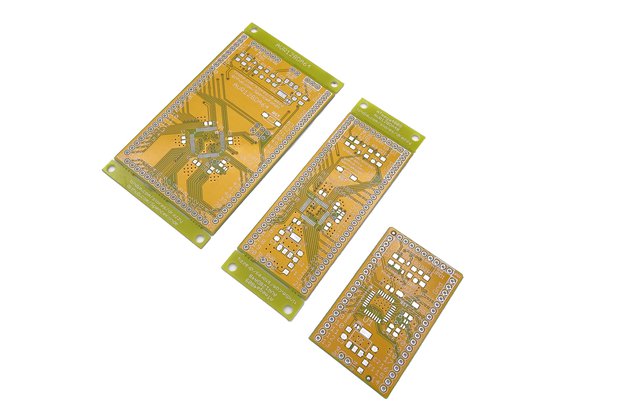
$3.95
Free Shipping!
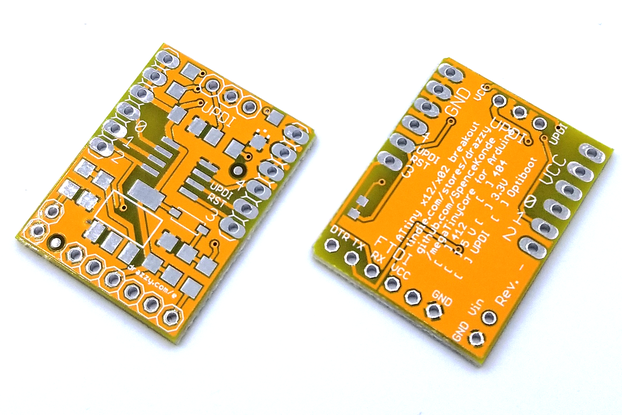
$1.70
Free Shipping!
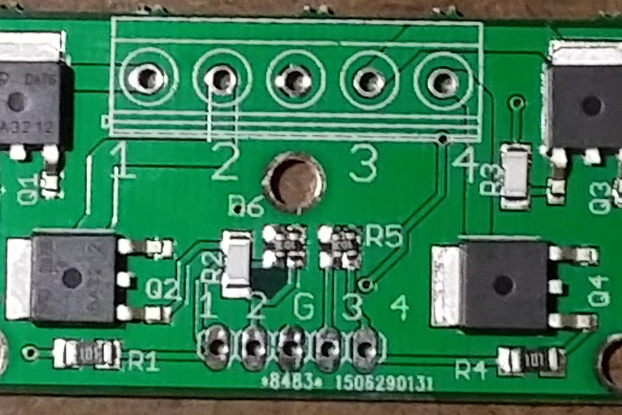
$13.00
Free Shipping!

$5.00
Free Shipping!
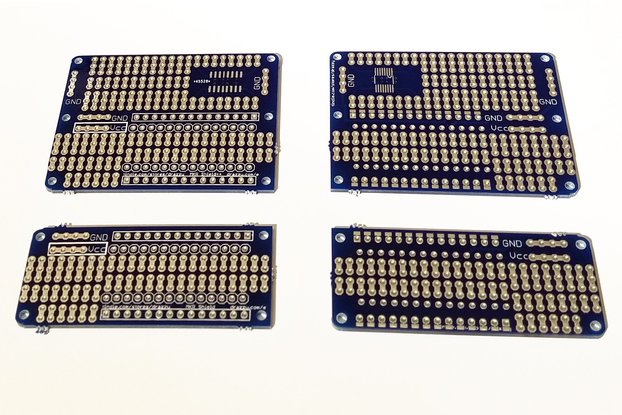
$5.50
Free Shipping!

$37.00
Free Shipping!
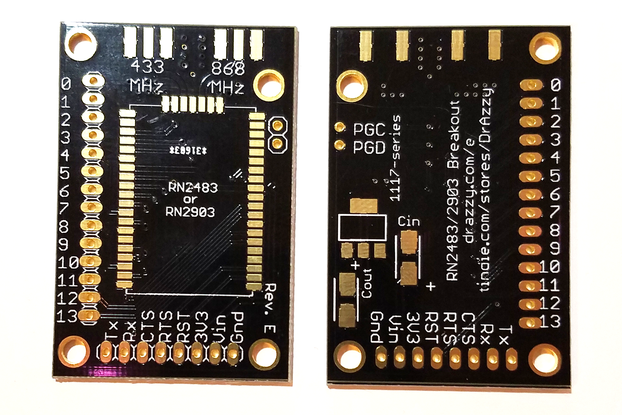
$3.00
Free Shipping!
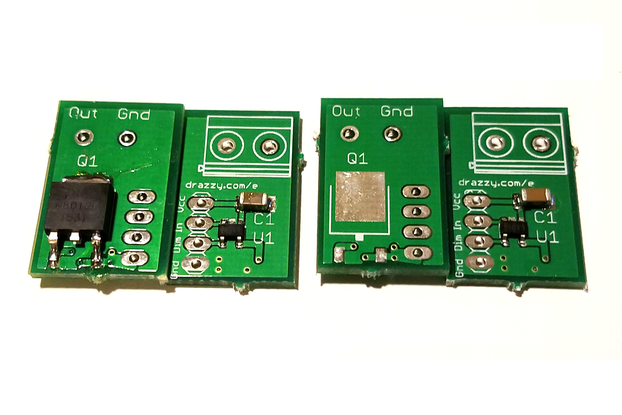
$8.00
Free Shipping!
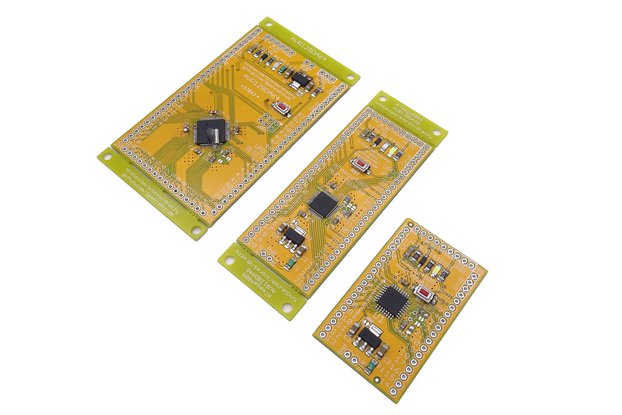
$15.00
Free Shipping!

$13.00
Free Shipping!

$9.95
Free Shipping!
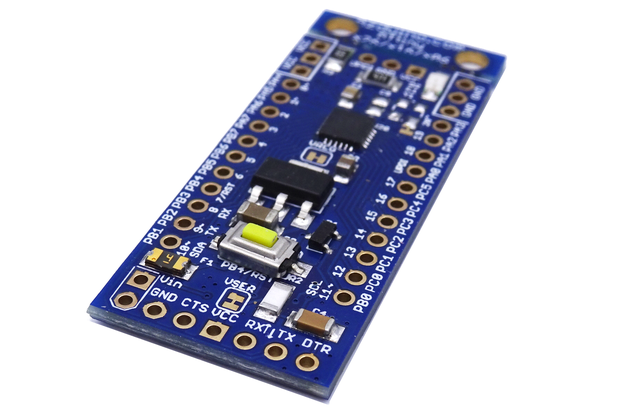
$12.50
Free Shipping!
By clicking Register, you confirm that you accept our Terms & Conditions
We recognize our top users by making them a Tindarian. Tindarians have access to secret & unreleased features.
We look for the most active & best members of the Tindie community, and invite them to join. There isn't a selection process or form to fill out. The only way to become a Tindarian is by being a nice & active member of the Tindie community!
